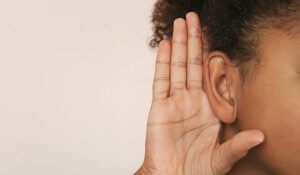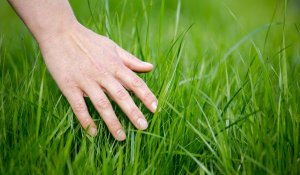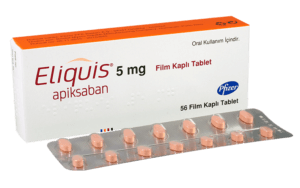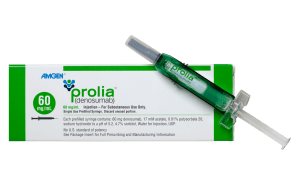
Grounding techniques are a proven tool that can help shift a person’s focus from anxiety-provoking thoughts to the present moment. Such emotional dysregulation happens when someone feels overstimulated, overwhelmed, or struggles to process challenging emotions, such as during a panic attack. This is especially common for individuals with ADHD or other spectrum disorders, such as autism spectrum disorder.
People with ADHD often experience more intense emotions than neurotypicals due to differences in how their brains regulate and process emotional responses. This heightened emotional sensitivity can make it harder to recover from distressing situations without effective coping strategies. While everyone may face moments of emotional imbalance, knowing how to self-regulate can make a huge difference.
How to know if you need grounding?
Everyone experiences dysregulation differently, but there are some common signs to look out for. These can include trouble breathing or shortness of breath, sudden mood swings or irritability, feeling overwhelmed by emotions, difficulty focusing or a blank mind, dizziness, and a racing pulse or tense muscles. In some cases, a person might feel the urge to drink alcohol, lash out, or engage in self-harm.
The 5-4-3-2-1 method for managing ADHD
The 5-4-3-2-1 method is a grounding technique often used to manage anxiety or stress by helping to focus on the present moment. It works by engaging the five senses; sight, touch, hearing, smell, and taste. This method helps shift attention away from anxious thoughts and brings the mind back to the here and now.
What is the 5-4-3-2-1 routine?





What is 5-4-3-2-1 grounding for ADHD?
Practicing the exercise often helps build skills in using sensory techniques to manage anxiety, improve focus and address other ADHD symptoms. Over time, it becomes easier to move from feeling overwhelmed to staying calm and aware.
Are some other grounding techniques besides the 5-4-3-2-1 method that can be used anywhere?
With time and self-reflection, a person can start to recognize their triggers, such as specific things or situations that lead to emotional overwhelm. However, it’s not always possible to avoid stressful or upsetting events. So, what steps can someone take to feel more grounded in those moments?
Breathwork techniques
A simple breathing technique involves exhaling for a longer time than inhaling. This basic method can be helpful during moments of panic when it’s hard to think of other techniques. The main goal in such situations is to stabilize breathing and ensure enough oxygen is reaching the lungs.
Box breathing is a technique named for its structure, where each step takes the same amount of time, often visualized as the sides of a box. For this method, a person breathes in for a count of four, holds their breath for four counts, breathes out for four counts, and pauses again for another four counts before repeating. This technique is especially useful when the upsets caused by ADHD are prolonged, because it can help set a timer that breaks the episode.
Sometimes, combining deep breathing exercises and visualization can help improve calm and focus. Try picturing a “safe place” in the mind while practicing recovery breathing. This involves taking a deep breath, slowly counting to 10 while exhaling, and repeating the process for as long as it takes to calm down.
Physical techniques

Tapping
The Emotional Freedom Technique (EFT) involves tapping specific areas of the body in a rhythmic pattern. This method helps individuals focus on their body and breathing, allowing them to feel more grounded and present. EFT is a highly effective tool for managing anxiety and is also useful for healing from trauma.
Thor’s hammer
For those with enough space, this technique combines movement and breathwork. It starts with standing in a wide stance for balance. While taking a deep breath in, the arms are lifted overhead as if holding an invisible hammer. On the exhale, the arms are swung down between the legs. The process is repeated with each breath.
Mental techniques
An anchoring phrase can help someone focus on the present moment by describing their current situation. It involves stating who they are, where they are, what time it is, and what is happening around them. For example, someone might say, “My name is (name). I’m in the office or classroom. Today is (date), and the time is (current time). I live at (address) and work as (occupation). I’m sitting next to my coworker or classmate (name).” This method helps ground a person by focusing on what is real.
Repeat affirmations
Similar to using an anchor phrase, affirmations can be prepared ahead of time. They don’t need to be complex. Some examples include:
- “I am safe.”
- “I am present, steady, and supported.”
- “My mind and heart are calm.”
Write it down
Putting thoughts and feelings into words can be helpful. Writing, especially keeping a journal regularly, offers several health benefits, like reducing stress and improving concentration. Focusing on one activity at a time, such as writing or drawing, helps center the mind. It may take practice to build focus, but it can be very soothing.
FAQs
What sounds can calm an ADHD mind?
Opt for instrumental music or tracks with faint, indecipherable vocals to avoid stimulating the brain’s language centers, which might keep your mind alert. Genres like classical, ambient, or smooth jazz can provide a calming effect.
What triggers anger in ADHD?
Struggling to focus or finish tasks can cause frustration and may trigger feelings of anger. Additionally, individuals with ADHD often experience heightened sensitivity to sensory input like noise, light, or touch, which can become overwhelming and lead to irritation or anger.
Are there simple diet changes that can help 5-4-3-2-1 grounding work?
Keeping the levels of important brain chemicals like dopamine and omega-3 stable is essential for grounding and the other techniques we mentioned any chance of working. Zoomind is a daily supplement that adds the building blocks that are necessary for your body to produce them.
L-tyrosine is a precursor to dopamine and may enhance cognitive performance and attention. Phosphatidylserine is required in the production of dopamine and other neurotransmitters. Dopamine deficiency is believed to be one of the primary triggers for ADHD. Deficiencies in omega-3 fatty acids, particularly eicosapentaenoic acid (EPA) and docosahexaenoic acid (DHA) may trigger ADHD symptoms like inattention, hyperactivity, and impulsivity.
What does an ADHD meltdown look like?
Signs of an ADHD meltdown may include physical behaviors like stomping feet, clenching fists, or throwing items. It can also involve loud vocal outbursts such as shouting or screaming. Emotionally, individuals might experience intense irritability, use profanity, or break down in tears.
What is the hardest age for ADHD?
The toughest period for individuals with ADHD often spans from middle school to the early years after high school. During this time, they encounter a broad variety of responsibilities while having limited ways to avoid tasks they find challenging or uninteresting. That’s not to say that ADHD is limited to young people. About a quarter to a third of teenagers who developed ADHD also have a persistent, although different, forms of the disorder throughout their adult lives.
How to immediately ground yourself?
Physical contact with natural elements or grounded surfaces can instantly create a grounding effect. This could mean walking barefoot on grass, placing your hands in the soil, touching a tree or plant, or immersing your hand in a river, lake, or ocean.













